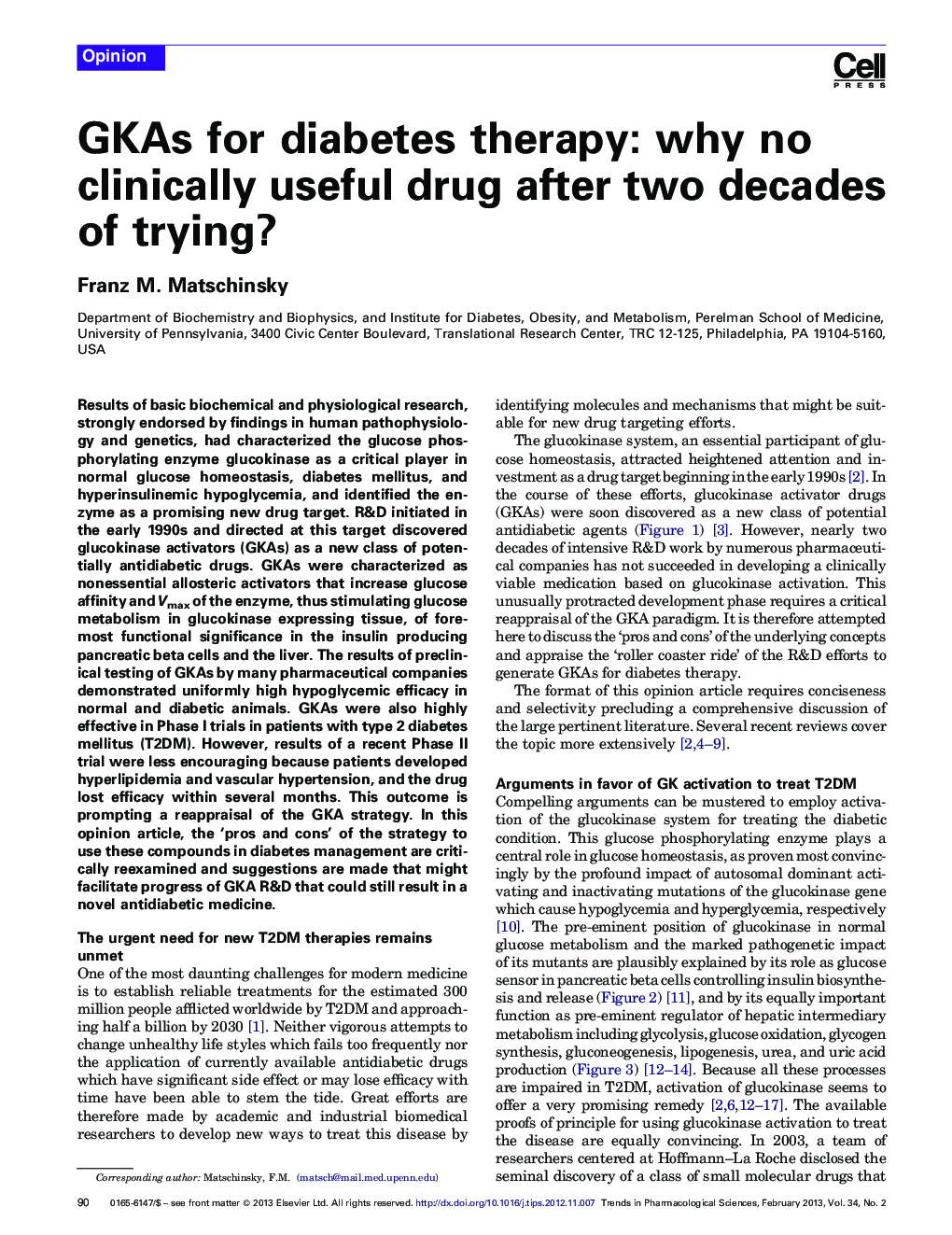| کد مقاله | کد نشریه | سال انتشار | مقاله انگلیسی | نسخه تمام متن |
|---|---|---|---|---|
| 2572774 | 1129327 | 2013 | 10 صفحه PDF | دانلود رایگان |

Results of basic biochemical and physiological research, strongly endorsed by findings in human pathophysiology and genetics, had characterized the glucose phosphorylating enzyme glucokinase as a critical player in normal glucose homeostasis, diabetes mellitus, and hyperinsulinemic hypoglycemia, and identified the enzyme as a promising new drug target. R&D initiated in the early 1990s and directed at this target discovered glucokinase activators (GKAs) as a new class of potentially antidiabetic drugs. GKAs were characterized as nonessential allosteric activators that increase glucose affinity and Vmax of the enzyme, thus stimulating glucose metabolism in glucokinase expressing tissue, of foremost functional significance in the insulin producing pancreatic beta cells and the liver. The results of preclinical testing of GKAs by many pharmaceutical companies demonstrated uniformly high hypoglycemic efficacy in normal and diabetic animals. GKAs were also highly effective in Phase I trials in patients with type 2 diabetes mellitus (T2DM). However, results of a recent Phase II trial were less encouraging because patients developed hyperlipidemia and vascular hypertension, and the drug lost efficacy within several months. This outcome is prompting a reappraisal of the GKA strategy. In this opinion article, the ‘pros and cons’ of the strategy to use these compounds in diabetes management are critically reexamined and suggestions are made that might facilitate progress of GKA R&D that could still result in a novel antidiabetic medicine.
Journal: - Volume 34, Issue 2, February 2013, Pages 90–99